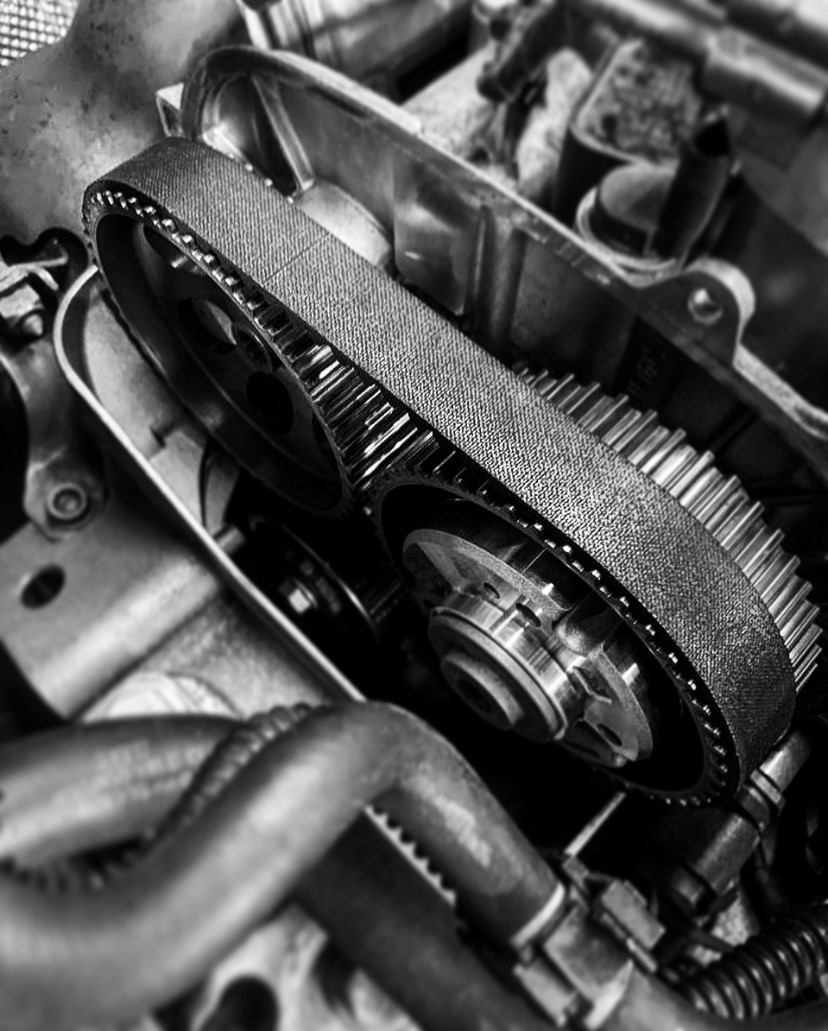Although they only appear to be a rubber strap with teeth; Timing belts are essentially responsible for making an engine’s internal components move at precisely the right time. Whats more the moving parts inside the engine essentially share the same space within milliseconds of each other moving in and out of the shared space. Ergo if one component were to mistime its part in moving away before the other was inbound, there would be a destructive collision of metal internals… This is no doubt a costly experience!

“Timing or Cam belt failure is a very costly repair, and that is why it is imperative to keep up with belt replacement maintenance intervals”
DID YOU KNOW?
A mere idling engine can complete in excess of 700 revolutions per minute (RPM), and ONE rpm is enough to cause a series of this metal on metal devastation. Travelling at speed when a belt breaks or slips will likely rotate hundreds if not thousands of times before motion is bought to a halt.
We also advocate the use of none other than OE or OEM replacement parts and as standard always replace ALL serviceable ancillary timing belt components such as guide rollers, tensioners, pulleys and if applicable the water pump with all timing belt applications.
TIMING MATTERS
The replacement interval of a vehicles timing/cam belt will vary depending on the manufacturer and model, there are 2 imperative rules regarding timing/cam belts that ALL motorists should know:
Rule 1: Never delay your belt replacement interval.
Rule 2: Never solely replace the belt itself, it is strongly advised that all guide rollers, tensioners, pulleys and in some cases water-pumps are also replaced as good practice.
The timing belt connects the crankshaft with the camshafts. This allows the valves to open allowing air in and out of the engine at the right time. If the belt breaks the crankshaft along with the pistons and connecting-rod assembly will continue to operate but the valves will remain still. This can cause the pistons to collide with the valves which can cause damage to the pistons, valves, and the entire head in some cases.
WHY DO TIMING BELTS BREAK?
The idlers/guide rollers and tensioniors that the belt is fitted to are the most common reason for a broken timing/cam belt. Bearing seizure and wear causes the belt to be burnt, torn or even slip off.

CALL OUR TEAM FOR A QUOTATION TODAY!
